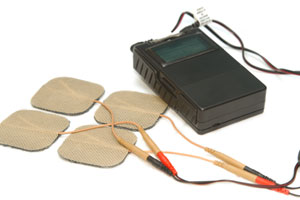 A few weeks back, I was talking with a friend who lives with pain. What she told me I had heard before yet it continues to stay on my mind. Her physician prescribed a TENS unit as another way to treat her back pain. She was given a prescription and was told to take it to the pharmacy to be filled, just like she would for any prescription medication. Once there, she was given the unit, leads and disposable pads with brief instructions on how to use it. That was it. There was nobody there to recommend where to place the leads appropriate to the location of her pain, how to best apply the pads so they will stay in place or how to begin to use the stimulation and adjust the level of sensation or type of sensation. I was not sure if the device she was given even allowed for changing the pattern of stimulation. Could it vary from constant to pulse for example?
A few weeks back, I was talking with a friend who lives with pain. What she told me I had heard before yet it continues to stay on my mind. Her physician prescribed a TENS unit as another way to treat her back pain. She was given a prescription and was told to take it to the pharmacy to be filled, just like she would for any prescription medication. Once there, she was given the unit, leads and disposable pads with brief instructions on how to use it. That was it. There was nobody there to recommend where to place the leads appropriate to the location of her pain, how to best apply the pads so they will stay in place or how to begin to use the stimulation and adjust the level of sensation or type of sensation. I was not sure if the device she was given even allowed for changing the pattern of stimulation. Could it vary from constant to pulse for example?
I had other questions, like:
- Did she have to purchase the unit outright or was there a trial allowed first with a rental unit? What would her insurance cover?
- Was there someone to talk to about how to best adjust the sensation intensity, type or even location in order to maximize the therapy results after she left the pharmacy?
- What was she supposed to do if she had a problem with the unit? For example, what if she had an allergic reaction to the lead pads?
- Did anyone explain what TENS is and how it works to relieve pain?
Can you answer these questions or did anyone ever explain them to you? Let me try:
What is TENS?
TENS is considered a form of “electroanalgesia” which helps decrease pain without the use of needle placement or surgical implant. It is designed interrupt pain signals in the body by competing with them. A TENS unit consists of a battery operated (usually 9 volt) device that can be easily worn on a belt, waistband or placed in a pocket of clothing with leads (wiring) and lead pads (adhesive patches). READ MORE
I feel very fortunate to have been taught about TENS and its use by an experienced physical therapist, who not only knew more about this intervention than I could write in this blog, but she also really cared about how to maximize its effectiveness for pain relief. She and I also had some success in using TENS to help stimulate bowel activity post-surgery in some who had a sluggish rebound after anesthesia (but that is off topic).
She was a strong believer that a TENS trial should be offered for at least the first two weeks. At one time, insurance companies would not pay for the purchase of the TENS unit unless a successful trial was completed—which they covered the rental fee. It was preferred that this trial was conducted by a trained health care professional, most commonly a physical therapist or rehabilitation nurse. I concur that this was a wise policy.
I learned that the placement of the leads and the variation of how the stimulation is delivered can differ from person to person and type of pain experienced. For example, one person may get the best relief when the leads are placed around the pain area and the stimulation is low and constant. Another, even with a similar type of pain, may experience maximum relief when the leads are placed on just one side and the stimulation is higher yet it pulsates. There are several variations to consider. The only way to know what works best is to make those changes and evaluate the effect.
TENS failures may be contributed to several causes that may include improper lead placement, only one type of stimulus or unclear expectations. After all, TENS most likely will not eliminate pain, but may help to lower how intense it is felt. Did you know that if you keep the TENS unit on all of the time, the effect weakens as your body adjusts to the familiar sensation? Timing of use is important.
So, if this therapy is offered or you are curious about it, give it a try. Just make sure that an adequate trial is given and you are taught how to use the unit for maximal effect. When in doubt, ask if you can work with a physical therapist during the first few weeks, at least. You might be surprised. Some living with pain have found that they are able to decrease how much pain medication they need, when options like these are added to the pain treatment plan.
Please share your TENS experiences. Help us learn more about this misunderstood treatment for pain.
